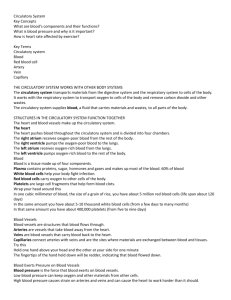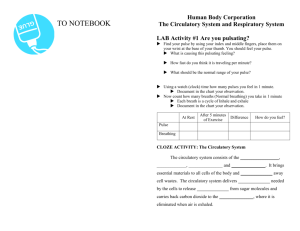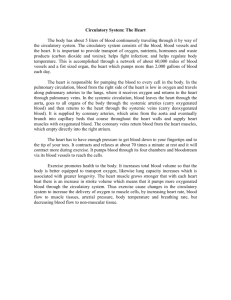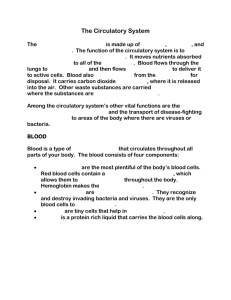Circulatory System
advertisement
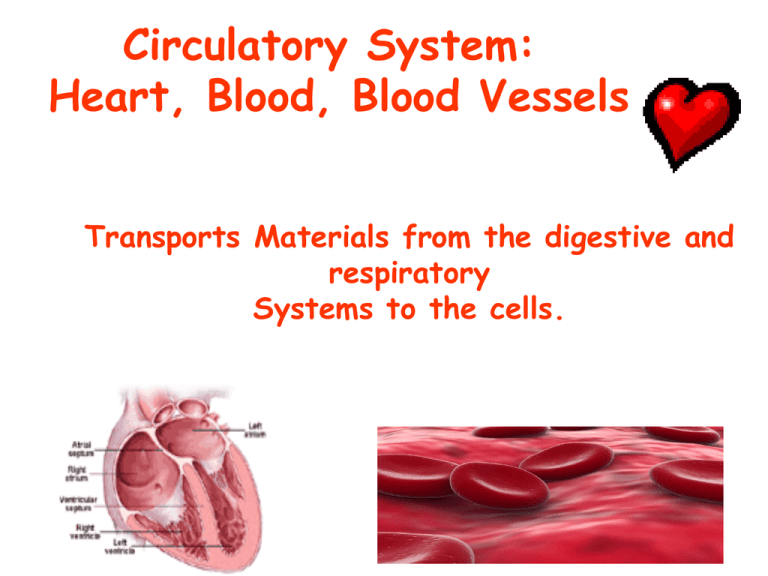
Circulatory System: Heart, Blood, Blood Vessels Transports Materials from the digestive and respiratory Systems to the cells. Structures in the Circulatory System • Heart – pushes blood throughout the body. – Two pumps – one on right side, one on left side. • Left side – pumps oxygen-rich blood to entire body • Right side - pumps oxygen-poor (used) blood to the lungs to receive oxygen. • Has valves to open and close. Heart Pumping • Chambers - each side of heart divided into 2 parts – right and left atrium and ventricle. – All blood is red, but oxygen rich blood is a much brighter and lighter shade of red. (charts usually show oxygenpoor blood in blue) – Blood carries oxygen and nutrients to all cells in the body. Blood • • • Blood –a fluid that carries all materials and wastes, delivers oxygen and removes CO2. made up of plasma, red blood cells, white blood cells and platelets. Blood carries oxygen and nutrients to cells of the body. Plasma 60% is plasma – A fluid that contains proteins, glucose, hormones, gases and other substances dissolved in water. – White Blood cells – help body fight infection. – Red blood cells – more numerous, pick up oxygen in lungs and transport it throughout body. – Platelets – large, solid cell fragments, help form blood clots. Clotting keeps us from losing too much blood from a cut. Different Blood Types • Each red blood cell has special proteins on its surface. The group of surface proteins determines blood type. • There are 2 blood-type proteins – A & B. • A person with A proteins in blood – Type A • A person with B proteins in blood – Type B • Some people have both proteins – Type AB • Some people have neither proteins – Type O 4 Types of Blood – A, B, AB, O Blood Pressure • Blood Presssure – the force produced when the heart contracts travels through the body. • The pressure exerted by blood on the veins and arteries. • Must maintain healthy blood pressure to get blood to all parts of body. • Too low – some cells will not get oxygen and other materials. • Too high – force will weaken the vessels and require the heart to work harder to push the blood through. Blood Vessels • Blood vessels – tube-shaped structures that move blood all over the body. – Arteries – carry oxygenated blood away from heart to the rest of the body – strong, thick walls – Veins – carry blood back to the heart, thinner; have a one-way valve. – Capillaries – narrow, smallest blood vessels, they connect arteries with veins.



